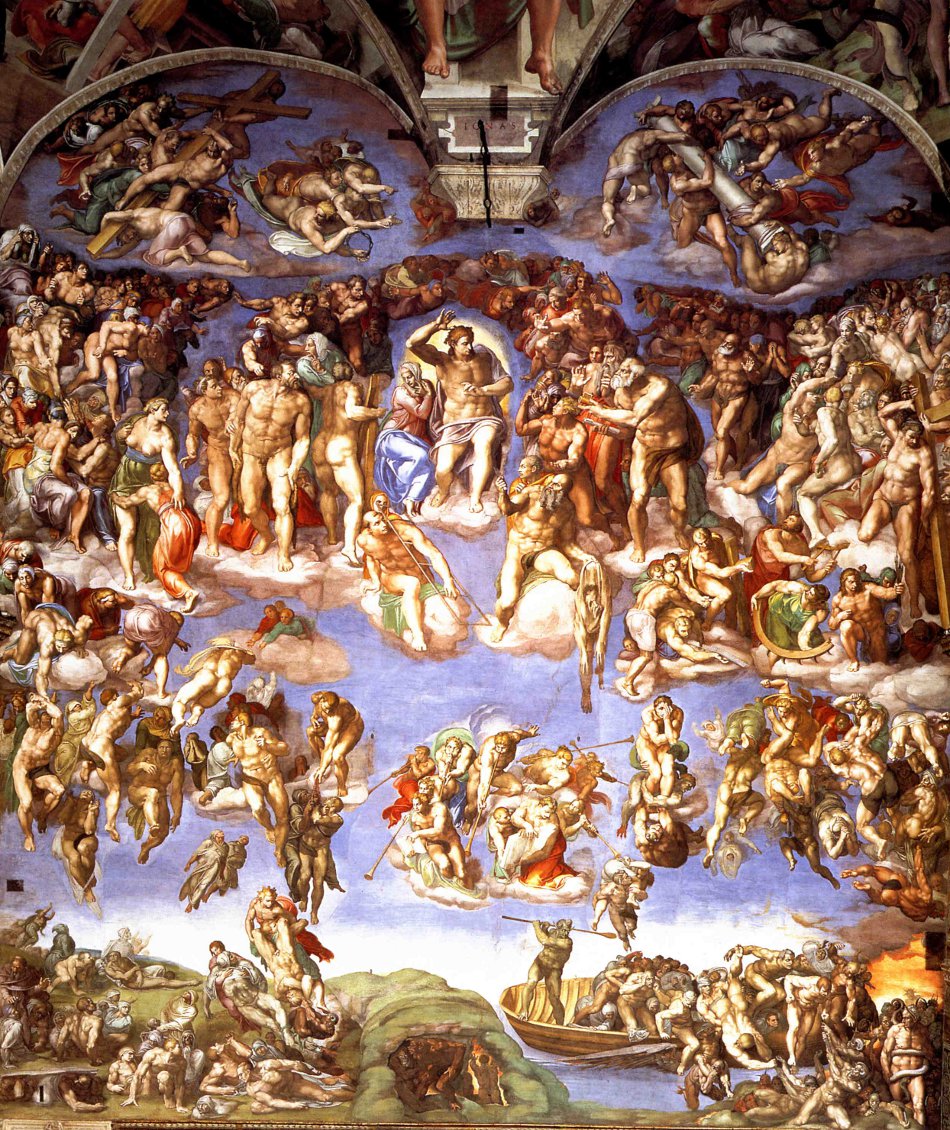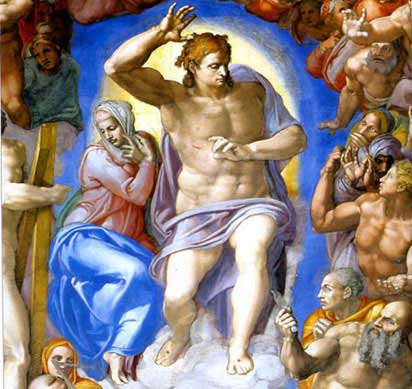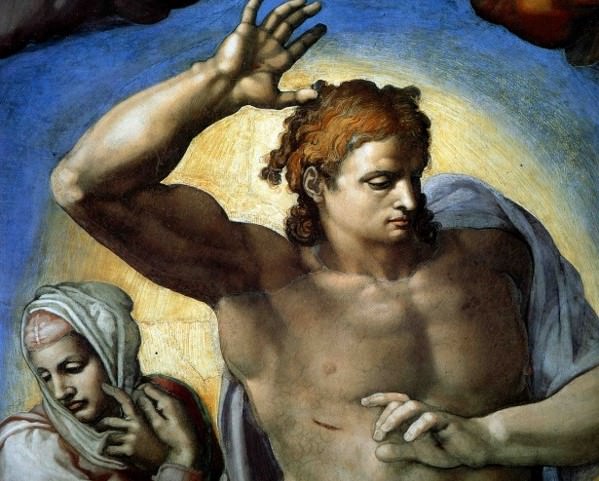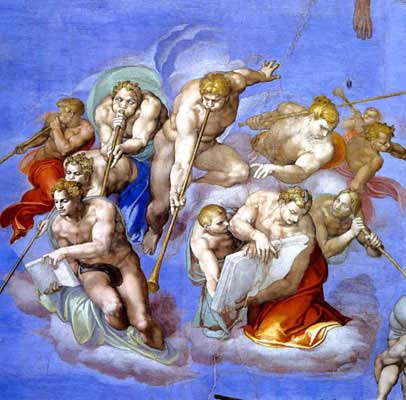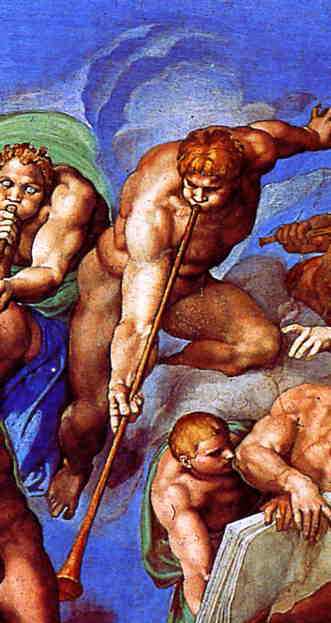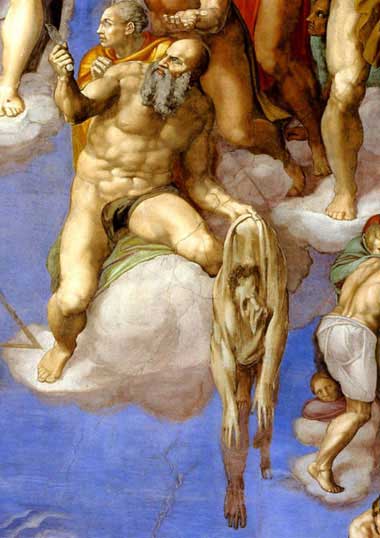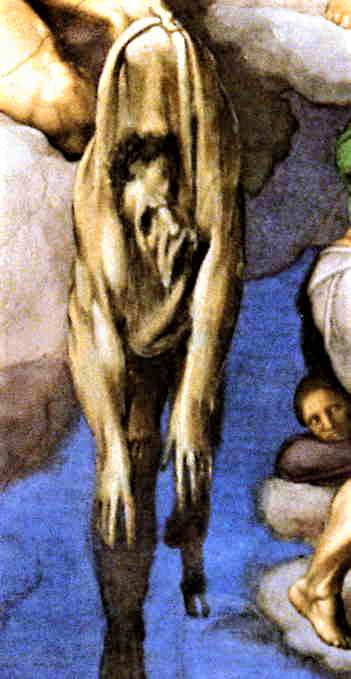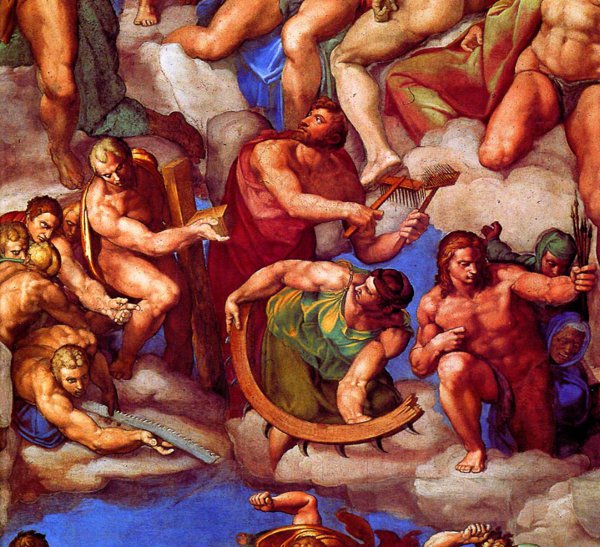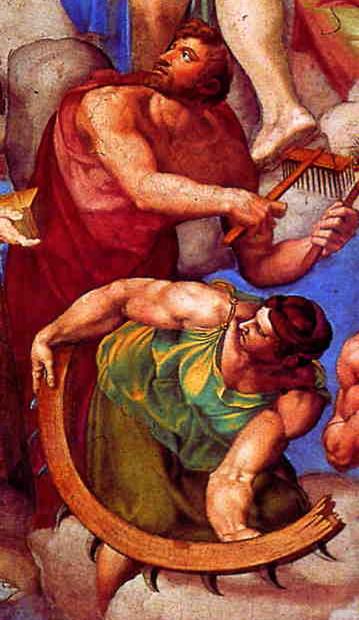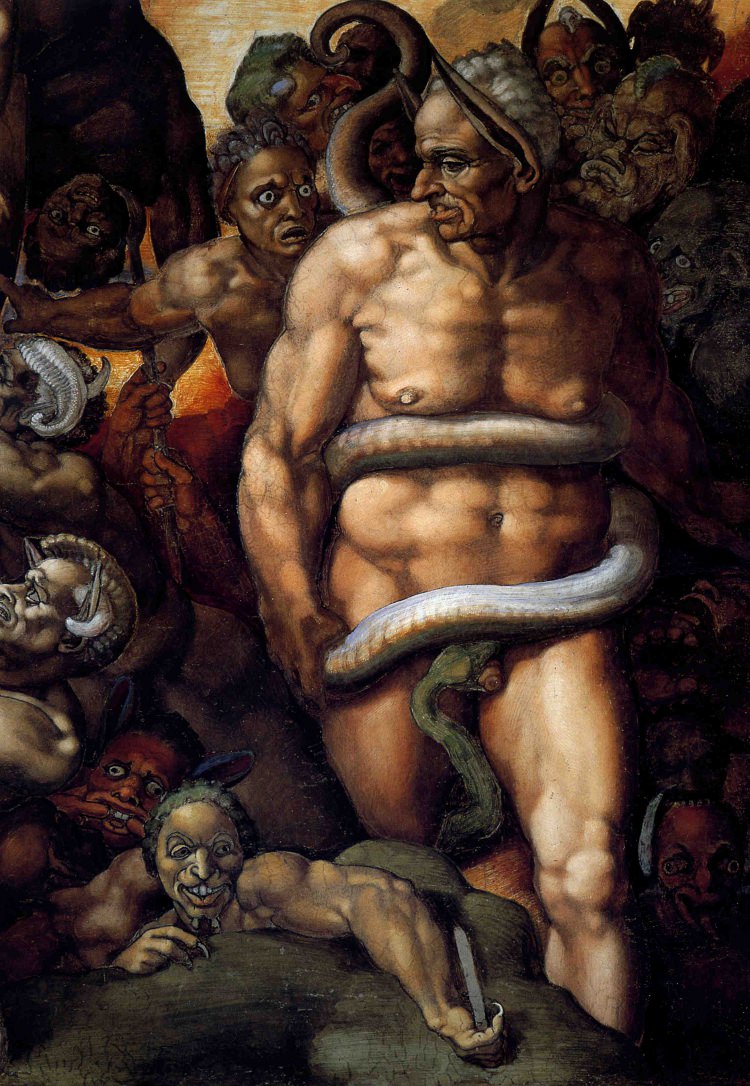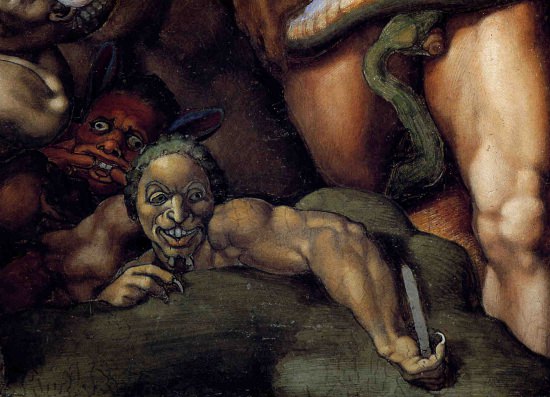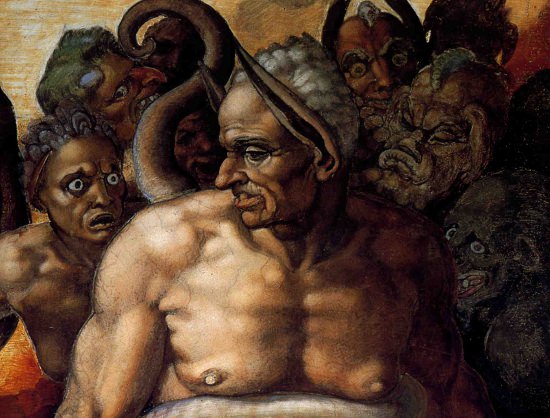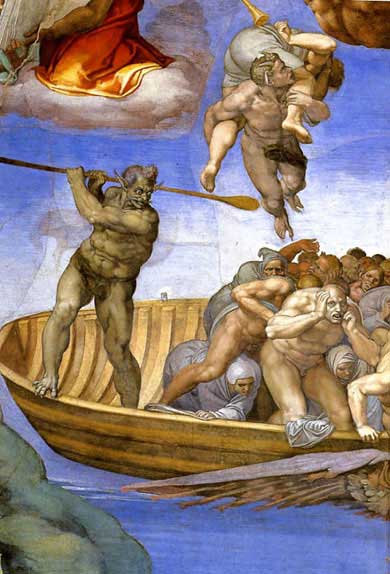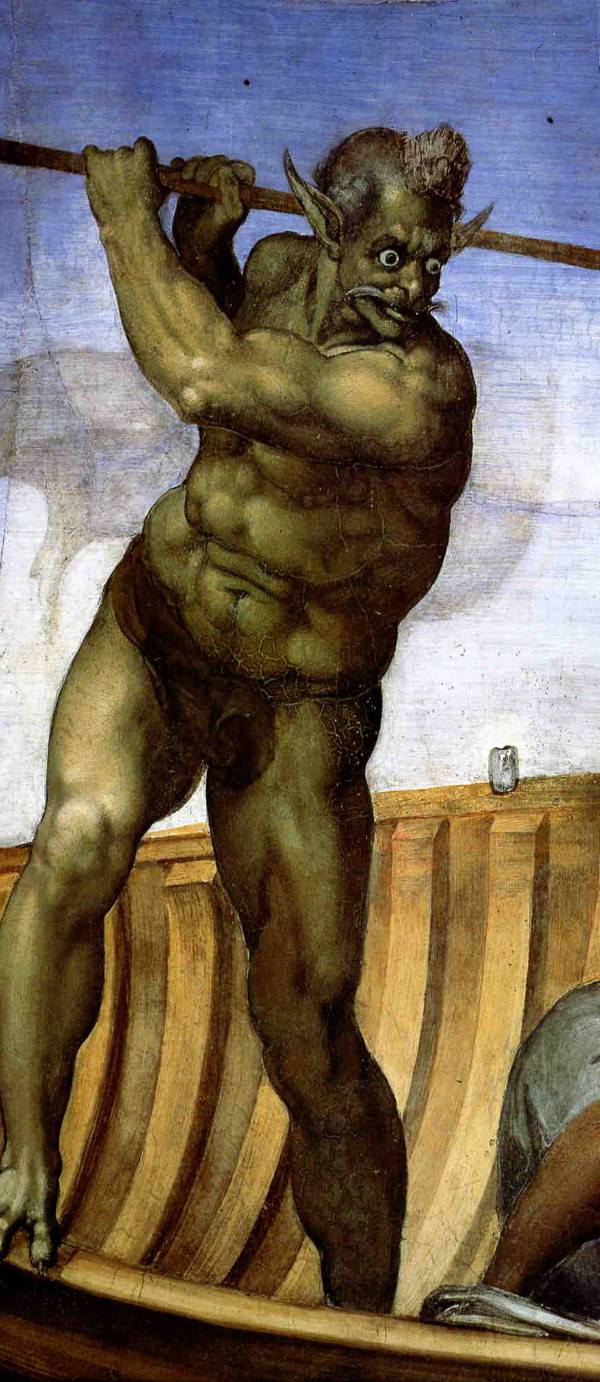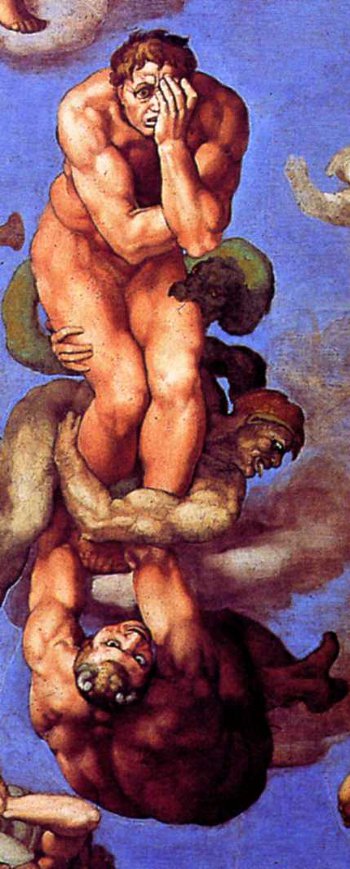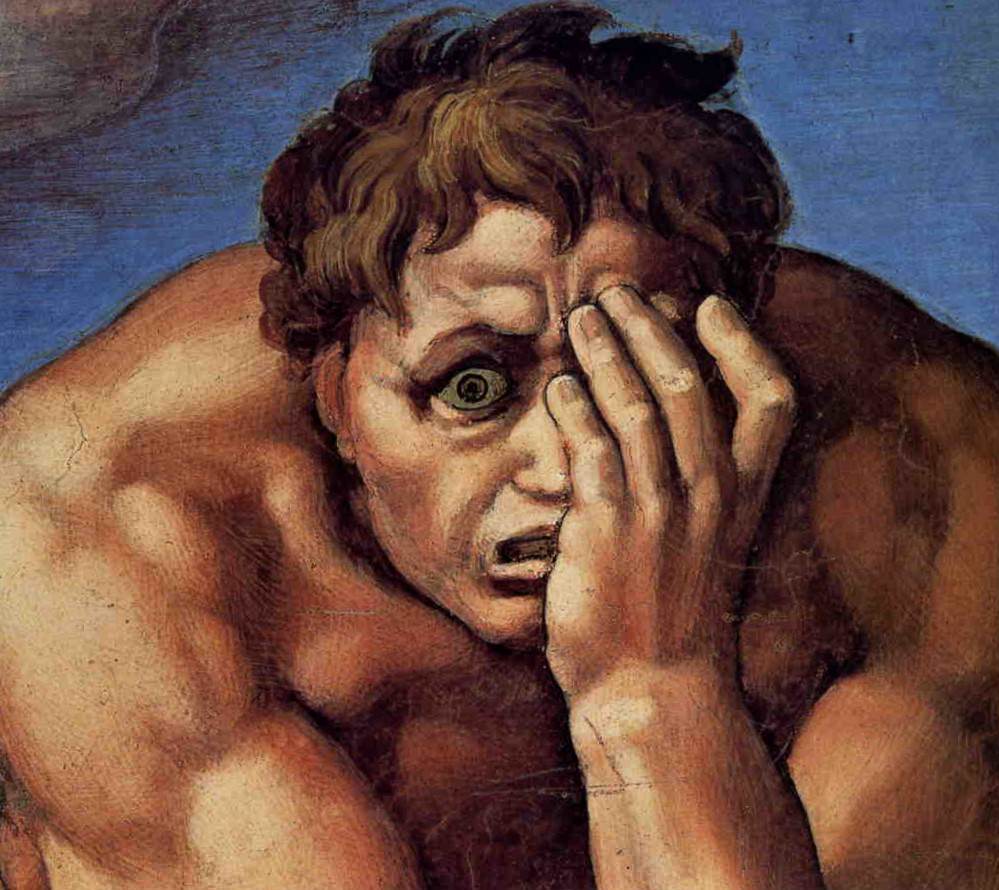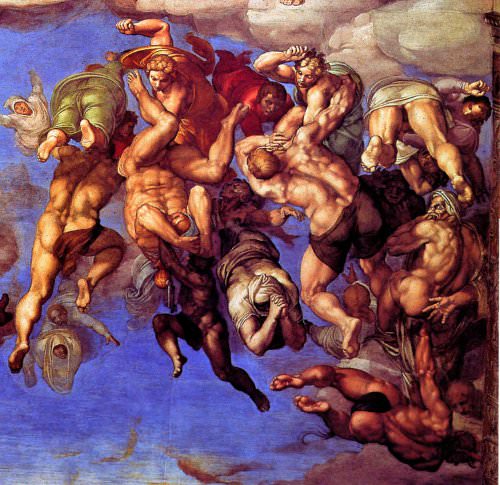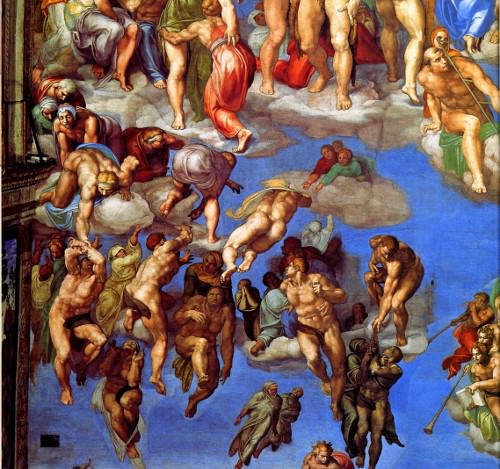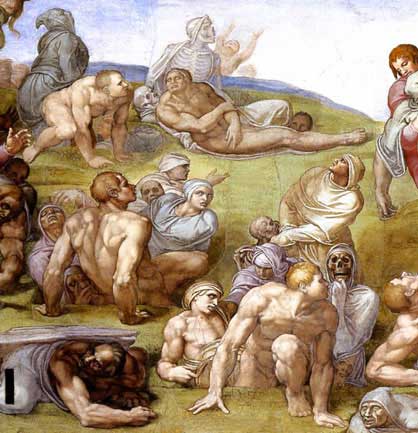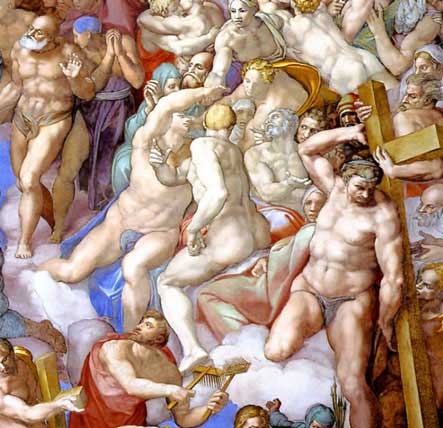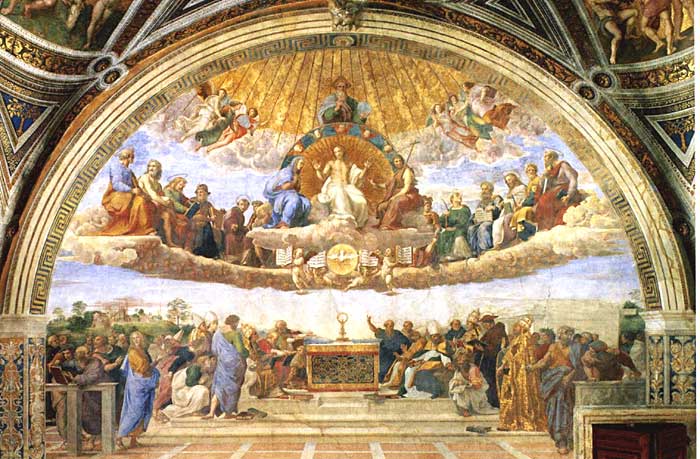The Last Judgement.
Images of a Masterpiece.
The Last Judgement by Michelangelo covers the wall behind the altar in the Sistine Chapel. The work depicts the second coming of Christ and, although the artist is clearly inspired by the Bible, it is his own imaginative vision that prevails in this painting.
The picture radiates out from the centre figure of Christ, and Michelangelo has chosen to depict the various saints included in the work holding the instruments of their martyrdom rather than the actual scenes of torture. When executing his "Last Judgement" Michelangelo had been given artistic licence to paint scenes, not only from the Bible but also from mythology. This shows great faith in the artist by his patron, Pope Paul III. Unfortunately, it was decided that works of art in sacred places had to be modest and a pupil of Michelangelo, Daniele da Volterra, was commissioned to cover the figures nakedness with loincloths and veils. Originally all the figures were naked, but da Volterra's intervention earned him the nickname of the maker of breeches.
Other overpainting was added in the next two centuries and for the same reason. With the restoration of the chapel in the 1980s and 1990s only Daniele da Volterra's additions have been saved as part of the history of the painting, all other additions have now been removed.
The fresco angles out at the top of the painting preventing dust from settling on it and improving the perspective of the work. At the top of the painting the cross, the crown of thorns, and other symbols of the passion of Christ can be seen. The centre figure is Christ deciding the destiny of the human race. With a gesture of his arms, he damns a large part of humanity plunging them into hell, but some are saved rising to heaven. Even the Madonna at his side seems to cower in fear at the scene.
Angels and Saints of the Last Judgement.
Angels' trumpets and the Archangel Michael (s)
The dead are awakened by angels' trumpets and the Archangel Michael reads from the book of souls to be saved. The larger book on the right contains a list of the damned destined for hell.
Just below the figure of Christ, are St Lawrence holding a ladder (this symbolises the saint's martyrdom on a grate over hot coals). St Bartholomew holds a sheet of his own skin in his left hand and in his right hand is a knife. This symbolises the terrible fate of Bartholomew who was flayed alive. The face on the skin is reputed to be a self-portrait of the artist
Below Peter are St Blaise, and St Catherine.
St Catherine holds a section of the spiked wheel that she was tied to for her torture. The wheel eventually broke, and she was beheaded. Just above St Catherine, St Blaise holds the iron combs used to tear the flesh from his body, he too was beheaded. St Sebastian holds the arrows that were shot into his body, this failed to kill him, so he was clubbed to death.
The Damned and the Saved of the Last Judgement.
Biagio da Cesena as Minos (s)
Biagio da Cesena, a papal master of ceremonies, criticised Michelangelo's work saying that nude figures had no place in such a sacred place and that the paintings would be more at home in a public tavern.
Michelangelo included da Cesena in the Last Judgement as Minos, one of the three judges of the underworld. When Biagio complained to the Pope the pontiff explained that he had no authority over hell and that the portrait would have to remain.
In Greek mythology, Minos was the king of Crete and was the son of Zeus and Europa. He became one of the three judges of the underworld after his own death and Michelangelo has depicted Minos with ass-ears and wrapped in serpents' coils. The coils indicate to what circle of hell the damned are destined.
The serpent's bite on the genitals of Minos (da Cesena) illustrates Michelangelo's disdain for the Cardinal and of course, Biagio must have been furious but... A point well-made I believe!
At the bottom of the painting the boatman Charon can be seen ferrying the damned into hell.
Charon is the mythical boatman of Roman and Greek mythology who ferried the damned to hell. He is featured in Dante's Devine Comedy, and in Virgil's Eneid, both these works provided inspiration for Michelangelo's interpretation of the Last Judgement.
Lower down on Christ’s right is the figure of a damned man who covers one eye in fear of his terrible fate.
This poor soul truly is damned. Demons and Devils from the underworld grasp and bite at his body dragging him down to the eternal damnation that awaits him. His facial expression is etched in the fear of the certain knowledge that there is no escape from these monsters.
He realises that all his mortal strength is useless against the hordes of demonic creatures from hell.
Or... Perhaps he's just has a very bad day at the office!
In this scene, Angel's push and punch the hapless damned down
toward Charon the boatman on their journey into hell. Demonic creatures hasten
the doomed to their final destination in the Underworld. Michelangelo’s knowledge of human anatomy is illustrated by the mass of bodies, viewed from every angle, as they are raised into Heaven.
The resurrection of the dead is shown at the bottom left of the painting.
- Home
- The Sistine Chapel
- Last Judgement
